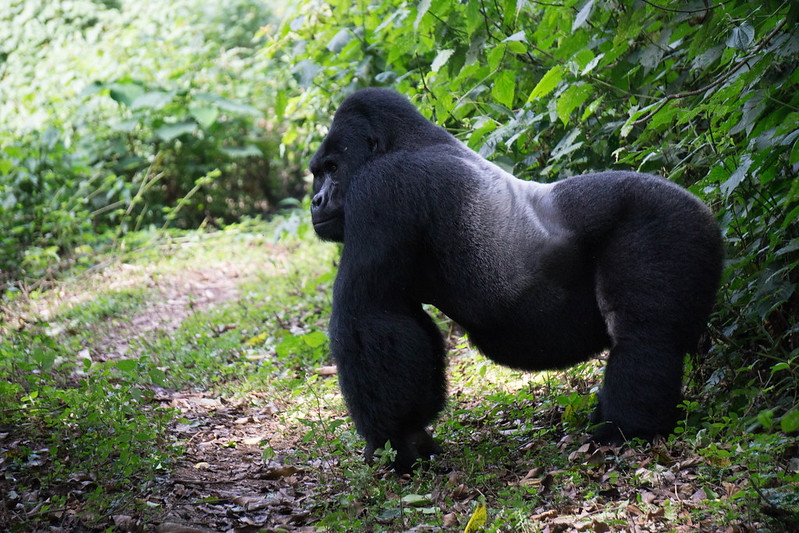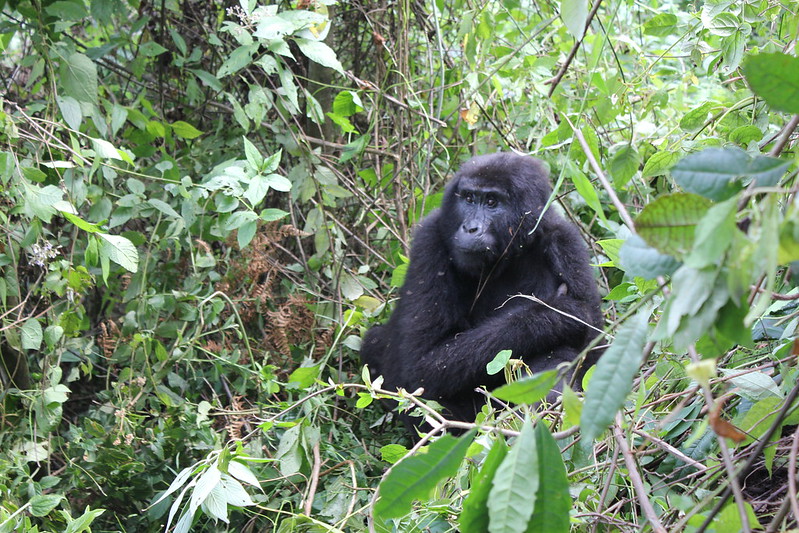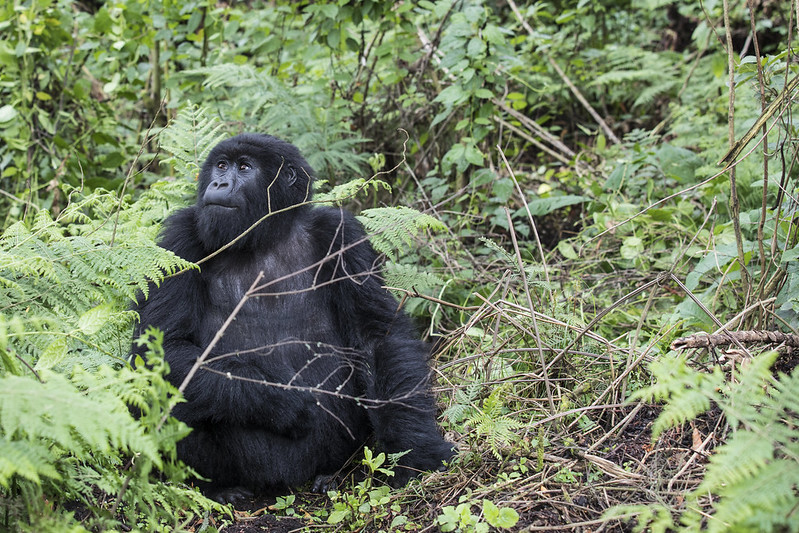
Are There Gorillas in Kenya? East African Safari and Gorilla Trekking Guide
Are There Gorillas in Kenya? East African Safari and Gorilla Trekking Guide.
“Are there gorillas in Kenya?” is a question that many wildlife enthusiasts have when organizing their trip to Africa. There are no native mountain or silverback gorillas in Kenya’s bush, thus the answer is straightforward: no. This does not exclude you from combining an amazing gorilla walk with Kenya’s breathtaking wildlife adventures, though. For a full East African safari that includes gorilla trekking in neighboring Uganda and Rwanda, Kenya is a great place to start.
In Africa, where can one find mountain gorillas?
Only three locations in Africa are home to mountain gorillas, especially the majestic silverback gorilla. About 1,000 mountain gorillas remain in the wild as of 2023, making this a noteworthy conservation success story. These amazing animals can be found in the Volcanoes National Park in Rwanda, the Bwindi Impenetrable National Park in Uganda, and the Virunga National Park in the Democratic Republic of the Congo.
Gorilla trekking is made possible by the breathtaking scenery of the Rwandan mountains, which are home to a number of habituated gorilla families. The Congo gorillas live in some of Africa’s most pristine wildness in Virunga National Park, while the deep forests of Bwindi National Park in Uganda provide similarly amazing gorilla viewing possibilities.
How to Arrange Your Safari in East Africa
Kenya’s abundant animal heritage plus the exceptional chance to go gorilla trekking in Uganda or Rwanda make up the ideal East African holiday. The Masai Mara in Kenya, where tourists can see the Big Five and, at the correct season, the Great Migration, is usually the starting point of a carefully thought-out itinerary.
Travelers can readily connect to Uganda or Rwanda for their gorilla trek adventure after exploring the savanna habitats of Kenya. With permits costing $800 per person, gorilla trekking in Uganda is a great value. Although Rwanda gorilla tours are more costly ($1,500 per permit), they offer great accessibility and infrastructure, especially for affluent tourists.
Kenyan Masai Mara Safari
The Masai Mara, Kenya’s crown jewel, is where your tour starts. With its expansive savanna vistas, this world-renowned reserve provides unmatched chances for wildlife observation. While giraffes browse among the acacia trees, elephants roam the plains, and lions pursue their prey, you will spend several days engaged in traditional safari activities. Before embarking on your gorilla trekking expedition, the lush environment of the Masai Mara offers the ideal introduction to African wildlife.
Traveling to Rwanda and Uganda to See the Gorillas
Most tourists who want to see mountain gorillas from the Masai Mara pick between Rwandan gorilla excursions and Uganda safaris. A more daring experience is provided by Uganda gorilla trekking in Bwindi Impenetrable National Park, which combines gorilla tracking with customary Uganda safari activities. As you hunt for these gentle giants, knowledgeable guides will lead you through deep undergrowth in the park’s old woodland, creating a dramatic environment for your hike.
Volcanoes National Park is the focal point of Rwanda’s gorilla safaris, which offer a shorter but no less unforgettable experience. The Rwandan mountains provide a striking setting for your gorilla hike, and well-kept paths and knowledgeable guides guarantee a seamless encounter. Rwanda’s excellent infrastructure and reduced travel times from Kigali are the main reasons why tourists select it.
Comprehending Gorilla Trekking
One of Africa’s most profound wildlife experiences is tracking gorillas. The process starts early in the morning with a briefing from knowledgeable guides, regardless of whether you go for gorilla trekking excursions in Rwanda or Uganda. These experts provide crucial details regarding gorilla behavior, safety precautions, and what to anticipate while trekking.
Depending on where the gorilla family is, the real gorilla journey may take one to six hours. A high sighting success rate is ensured by trackers who interact with your guides to assist in finding the gorillas. You will get to spend a valuable hour seeing these amazing animals in their natural environment after you arrive at a gorilla family. Lifelong memories are made as you see a silverback gorilla engage with its family. Insight Safari Vacations provides gorilla trekking, culture, and a 7-day safari in Kenya.
Impact on the Community and Conservation
Rwandan gorilla excursions and Ugandan gorilla safaris are both essential to conservation initiatives. The conservation of these endangered primates and their habitat is directly funded by the proceeds from gorilla trekking permits. Through job openings and community development initiatives, local communities gain and wildlife conservation becomes a sustainable model.
One of Africa’s most remarkable wildlife comebacks is the triumph of mountain gorilla conservation. The mountain gorilla population has increased substantially in recent decades thanks to responsible tourism, community involvement, and careful management. This accomplishment shows how effectively run tourism can support animal conservation while giving tourists life-changing experiences.
The Best Times to Go
Seasonal patterns must be carefully taken into account while planning your East African safari and gorilla climb. July to October, when the Great Migration occurs, is the busiest time of year for the Masai Mara section. Nonetheless, the park provides year-round, top-notch wildlife viewing. The dry seasons of June through September and December through February are the ideal times to see Rwandan gorillas or go on a hike in Uganda. Better trekking conditions and photographic opportunities are available during these times.
Realistic Aspects
Many practical considerations must be made while organizing a safari and gorilla expedition in Kenya. First of all, make sure to reserve your gorilla permits well in advance because they frequently sell out months in advance, particularly during busy times of the year. Think about collaborating with knowledgeable tour companies that can handle the logistics of traveling between nations and parks.
Gorilla hiking requires a great deal of physical training. Being reasonably fit allows you to fully appreciate the experience, but you are not required to be an athlete. Although the trip through the jungle can be difficult, the guides adjust the pace to the group’s ability. Comfort during your journey is ensured with the right clothing, such as durable hiking boots and rain gear.
Cultural Immersion in Tanzania, Rwanda, and Kenya
Both gorilla hikes and Kenya safaris provide rich cultural experiences in addition to wildlife interactions. Interactions with Maasai communities in Kenya offer valuable perspectives on traditional African ways of living. Similar to this, villages in Rwanda and Uganda that surround gorilla habitats share their own cultural history with tourists, giving your trip to East Africa more dimension.
Organizing Travel
Your combination safari needs to be well planned. You can start your Masai Mara safari from Nairobi, Kenya’s capital, where international aircraft usually land. For your gorilla expedition, there are later connecting flights from Kenya to either Rwanda or Uganda. Numerous tour companies specialize in these combo safaris, managing all the arrangements, such as reserving activities, lodging, and transportation.
Investing in Adventure
Even though a safari and gorilla walk in Kenya is a substantial financial commitment, the experience is worth it. Think about the price of good lodging, qualified guides, transportation, and other activities in addition to gorilla permits. Many tourists discover that distributing their spending among a range of lodging options—from mid-range to luxury lodges—helps control expenses without sacrificing comfort.


